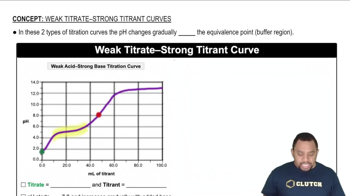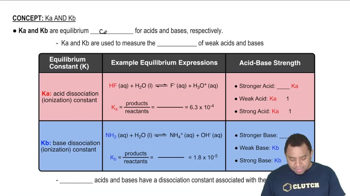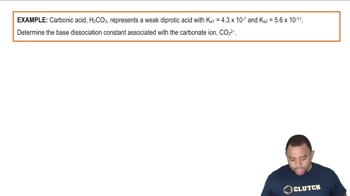Textbook Question
Classify each acid as strong or weak. If the acid is weak, write an expression for the acid ionization constant (Ka). a. HF

 Verified step by step guidance
Verified step by step guidance



Classify each acid as strong or weak. If the acid is weak, write an expression for the acid ionization constant (Ka). a. HF
Classify each acid as strong or weak. If the acid is weak, write an expression for the acid ionization constant (Ka). b. HCHO2
Classify each acid as strong or weak. If the acid is weak, write an expression for the acid ionization constant (Ka). c. H2SO4
Rank the solutions in order of decreasing [H3O+]: 0.10 M HCl; 0.10 M HF; 0.10 M HClO; 0.10 M HC6H5O.
Pick the stronger base from each pair. a. F– or Cl– b. NO2– or NO3–